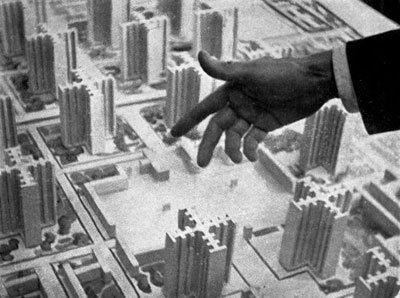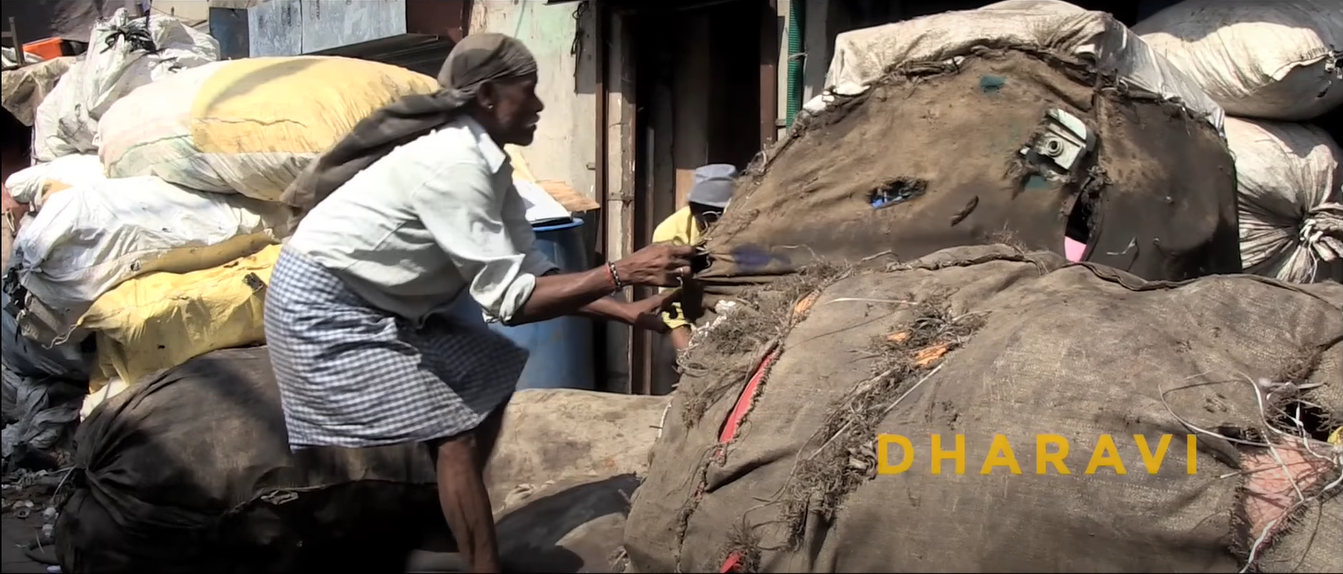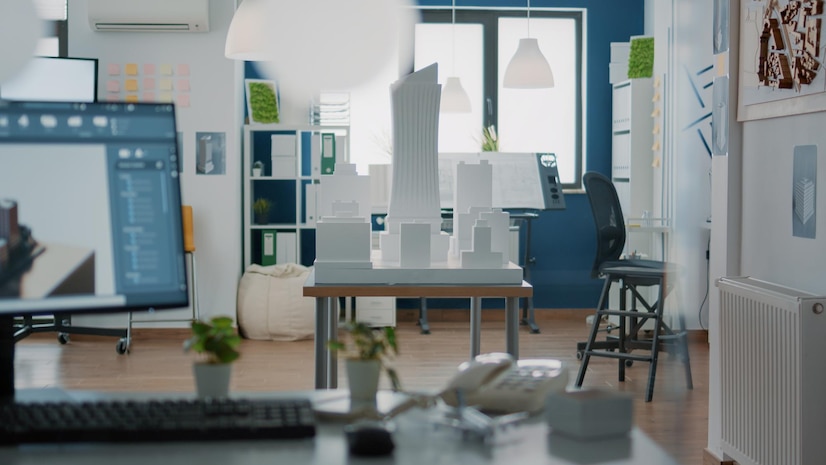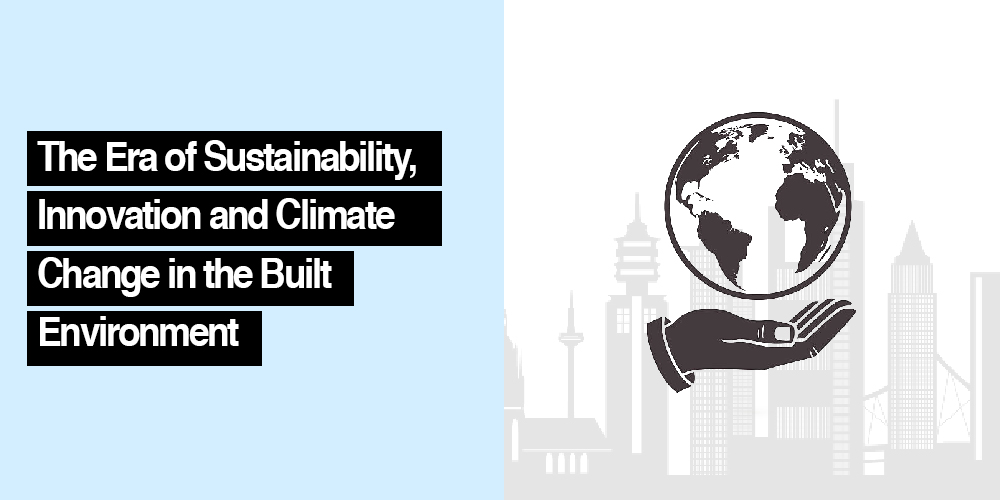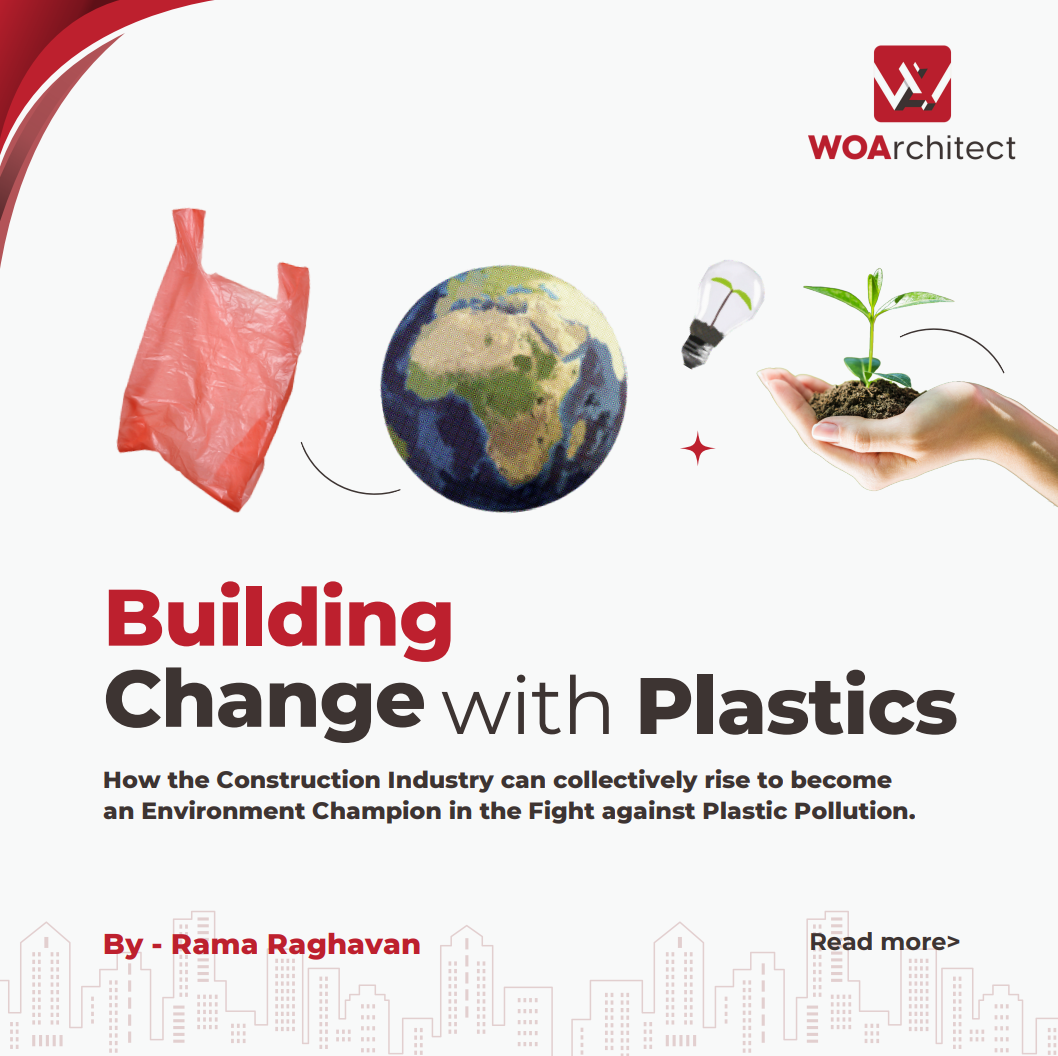
Building Change with Plastics
In light of the United Nations' emphasis on the Plastic Pollution Crisis this year, it is crucial to re-evaluate and transform the Building Industry's relationship with plastic. This article explores how the industry can become an environmental champion by adopting responsible production and consumption practices and fostering material and technological innovations to move towards a sustainable and plastic-free future.
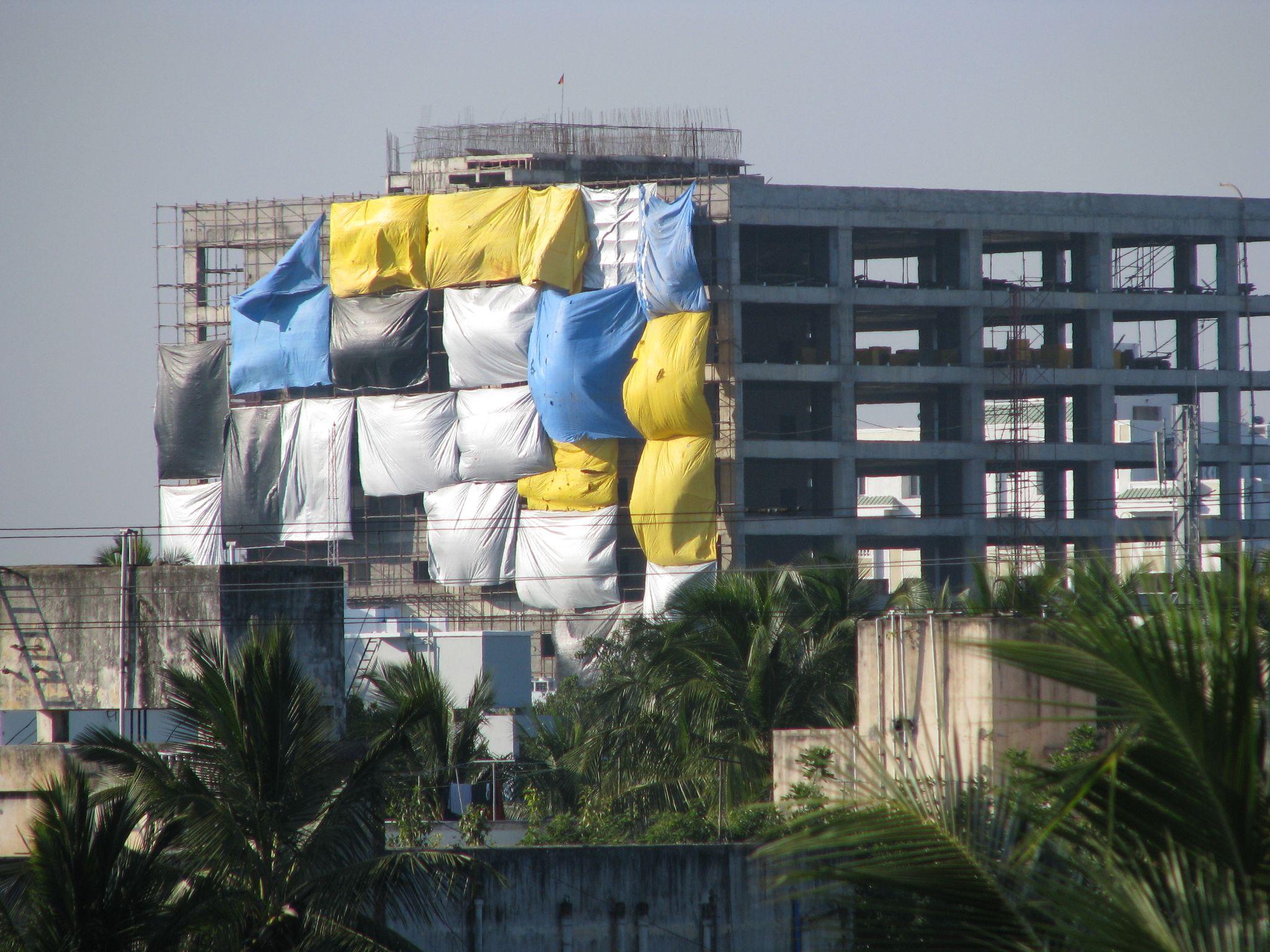
Plastic wrapped futures | Image Source: Wikimedia Commons
Glistening, sun-drenched seas with rich marine life, cattle grazing placidly on pristine meadows, the enchanting beauty of mountains draped with dense forests, crisp air caressing our skin, and earthy aroma arousing our senses while we walk along natural trails, these are all the memories of experiences we cherished at some point from our childhood travels. Cut to the present, the reality is terrifying now- all we see around us is scarring images of plastic-clogged oceans with aquatic life choking to death, meadows encroached with hazardous garbage dumps, mountains switched for towering landfills with the acrid stench of methane cutting sharply through the thick smog-laden air. This is the distressing inheritance we are bequeathing to future generations. Who should bear responsibility for this abject abuse of our environment?
While we all are culprits in some way or the other, we will focus on one major stakeholder that has impacted the environment in irreversible ways - The Building Construction Industry. Although as a fraternity there have been attempts to bring in sensitive practices, we have largely fallen short when it comes to responsible production, consumption and management of resources. Today, of all resources, plastic remains to be one of the most ill-managed materials in the industry that continues to be a global contributor to wide-scale ecological abuse.
How does the Construction Industry feed into the pressing plastic pollution crisis? What are the consequences of mindlessly using plastics in construction without consideration of the ongoing climate emergency? Before we probe into these very critical questions, let us first try to gain a factual understanding of the massive impact plastic has on the environment.

The Distressing Inheritance | Image Credit: Hermes Rivera | Unsplash
How Plastic is Killing the Environment.
Environmental Hazards of Plastic Waste Generation and Manufacturing Processes
The United Nations has identified the Plastic Pollution Crisis as an emergency and declared it the focus for this year. We now globally produce 460 million tons of plastic every year, which has grown almost 4 times in the last 30 years. Out of this, 22% is uncollected, 19% is incinerated, a whopping 50% is disposed of as residue making its way to landfills, while only a meagre 9% is recycled[1]. The most alarming fact posted by the OECD global plastics outlook report is that huge amounts of residual plastic waste have leaked over the years and continue to flow into aquatic environments each year, contaminating rivers, seas and oceans, and steadily thwarting marine life. Consequently, this cycle of pollution poses serious risks to human health as microplastics find their way into the human body through various means.
The other grave concern is around the consumption of virgin plastic and the disastrous climate implications brought upon by manufacturing processes. The United Nations Environment Programme (UNEP) reinforces the ramifications of the climate caused by plastic manufacturing by stating, “The production of plastic is one of the most energy-intensive manufacturing processes in the world. The material is made from fossil fuels such as crude oil, which is transformed via heat and other additives into a polymer. In 2019, plastics generated 1.8 billion metric tons of greenhouse gas emissions – 3.4 per cent of the global total.”[2]
Where are the Plastics in our buildings?
Plastic Consumption in the Building Construction Industry
The Building and Construction industry is one of the major consumers of virgin plastics[3] or polymers with an 11% consumption that is predicted to steadily rise to 16% by 2060, amounting to almost 193 Million tons per year. These numbers are a disturbing projection based on current reality. However, it is not too late to change our detrimental practices and collectively rise to the challenge of conserving our environment.
[3] Virgin Plastics refer to plastics manufactured afresh and not processed from older plastic or recycled.
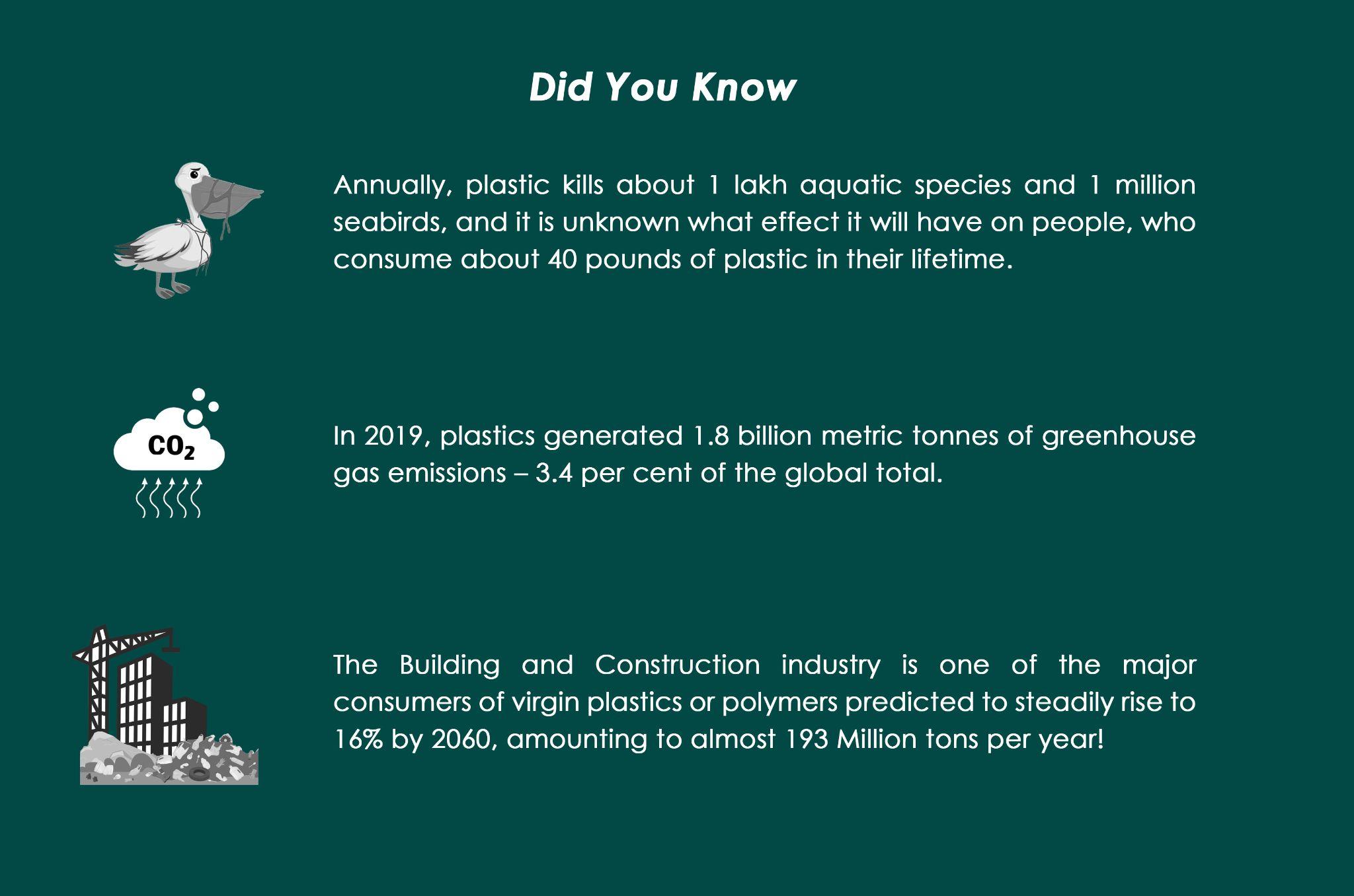
Image Source: Author
Let us first briefly look at the existing use of plastics in the building industry and the patterns of use. Plastic as a material began gaining popularity in the construction industry owing to its dual advantage of cost-effectiveness combined with durability. The form of plastic that sees the maximum usage in construction has been reported as Poly Vinyl Chloride or the ubiquitous PVC[1]. The material is versatile, and used in plumbing pipes, ducts and electrical conduits, cables, window profiles, flooring finishes, wall cladding finishes and roofing sheets & membranes, making it the most chosen among other forms of polymers. The second in line is the Poly Ethylene or Polythene, synonymous with the visual of blue sheets that cover buildings during monsoon. Polythene is mostly used as a waterproofing and weatherproofing barrier and also for purposes of acoustic insulations. The other forms that are in use, but not as widely as PVC, are Polystrene (insulation, cladding and packaging) and Polyurethane (insulant and sealant sprays).
[1] Report by Precedence Research, the global building and construction plastic market size 2020- 2030
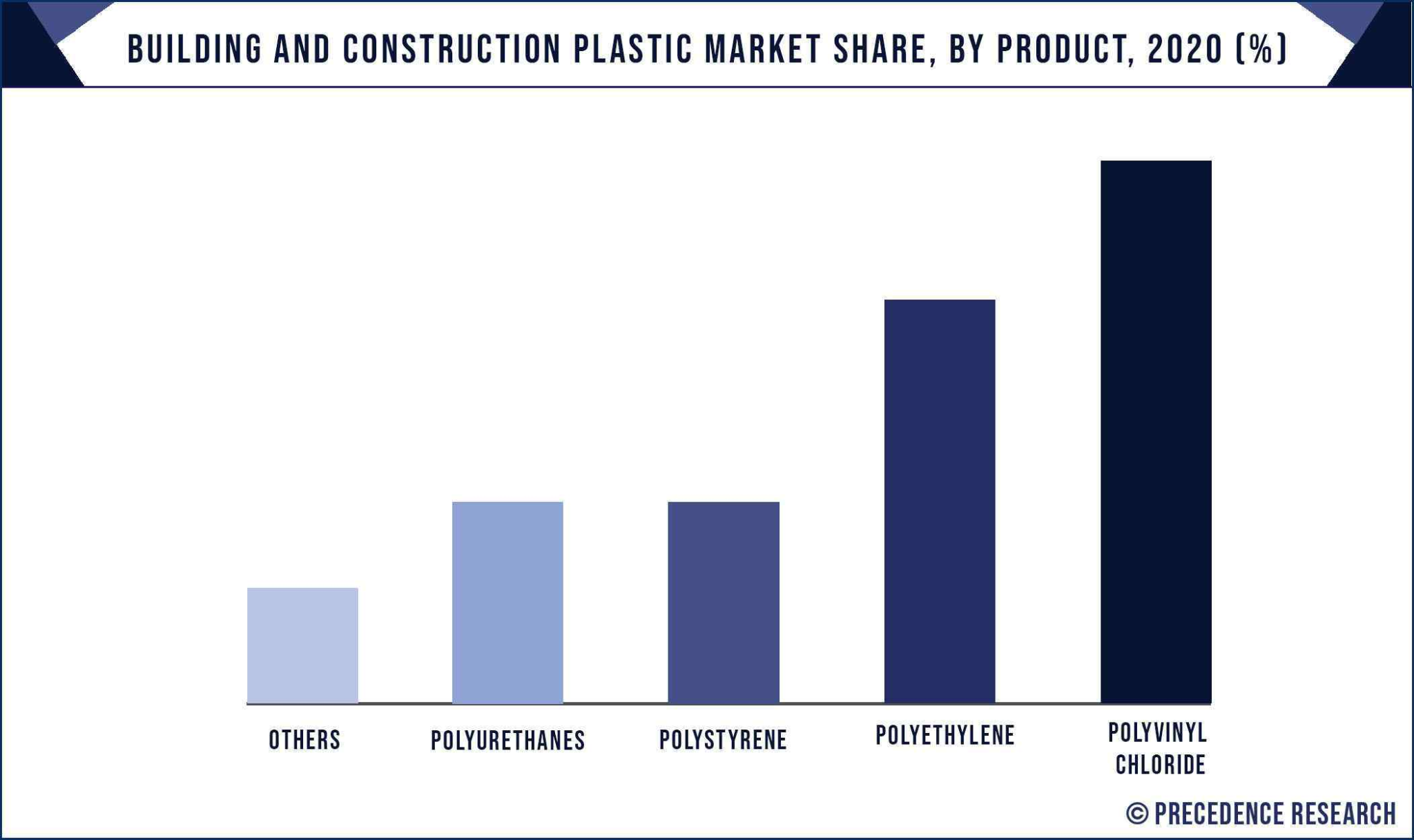
Most used forms of Polymer in the Building Industry. Image source: Precedence Research
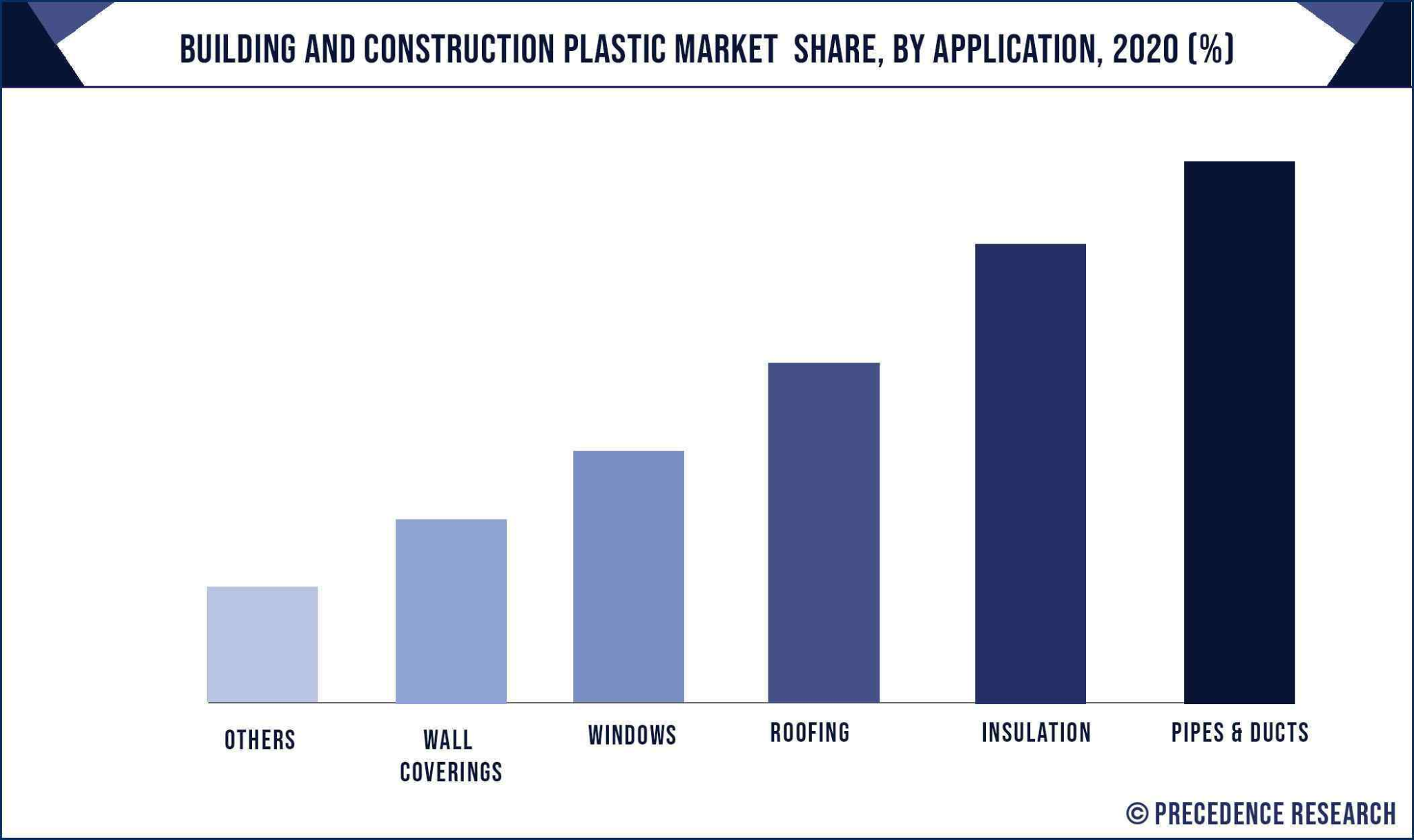
Most used building applications of Plastic in 2020. Image source: Precedence Research
Plastics are clearly versatile, which is why they remain a strong choice of material in several parts of the building. The question that arises is how the industry can move forward in a direction that does not negate the versatility of the material yet makes sure that the environment is not compromised. And the larger question that speaks of responsible consumption becomes:
“How can the Building Construction industry become a beacon in the fight against plastic pollution?”
The answer is multifold since the issue is nuanced and requires an in-depth probing into systemic practices. In the next segment of this article, we will look at pointed practices that the industry could adopt to move towards a system of responsible production and consumption.
Steps that the Construction Industry can take to minimize Plastic Pollution
1. Judicious and responsible consumption of Plastics-
A Life Cycle Assessment Approach to Consuming Plastics: Building projects are invariably planned in silos without adequate foresight, thus leading to implications that go beyond the site. It is imperative to assess each step of the building for its external impacts. For this reason, firms must ensure a complete Life Cycle Assessment (LCA) of building products that incorporate plastics. For example, if we consider PVC Wall cladding, one must identify all the stages in its lifespan right from the extraction of raw materials, processing of secondary materials, to production and manufacturing, transporting and distribution, assembly on site, its life as a building component, periodic maintenance, and finally steps to be taken post demolition. At each of these stages, one must carefully consider all potential impacts that can be caused. The impacts to be taken into account include Environmental impact i.e. impact on climate, ecology, and Social impacts i.e. jobs created, empowering communities and other socio-economic factors. There are several softwares like Ecochain that help conduct a detailed LCA of any building product to help designers and clients make informed choices. Opting for an LCA approach will ensure that the most responsible decisions are taken that minimise the trade-offs in terms of environmental and social impacts.
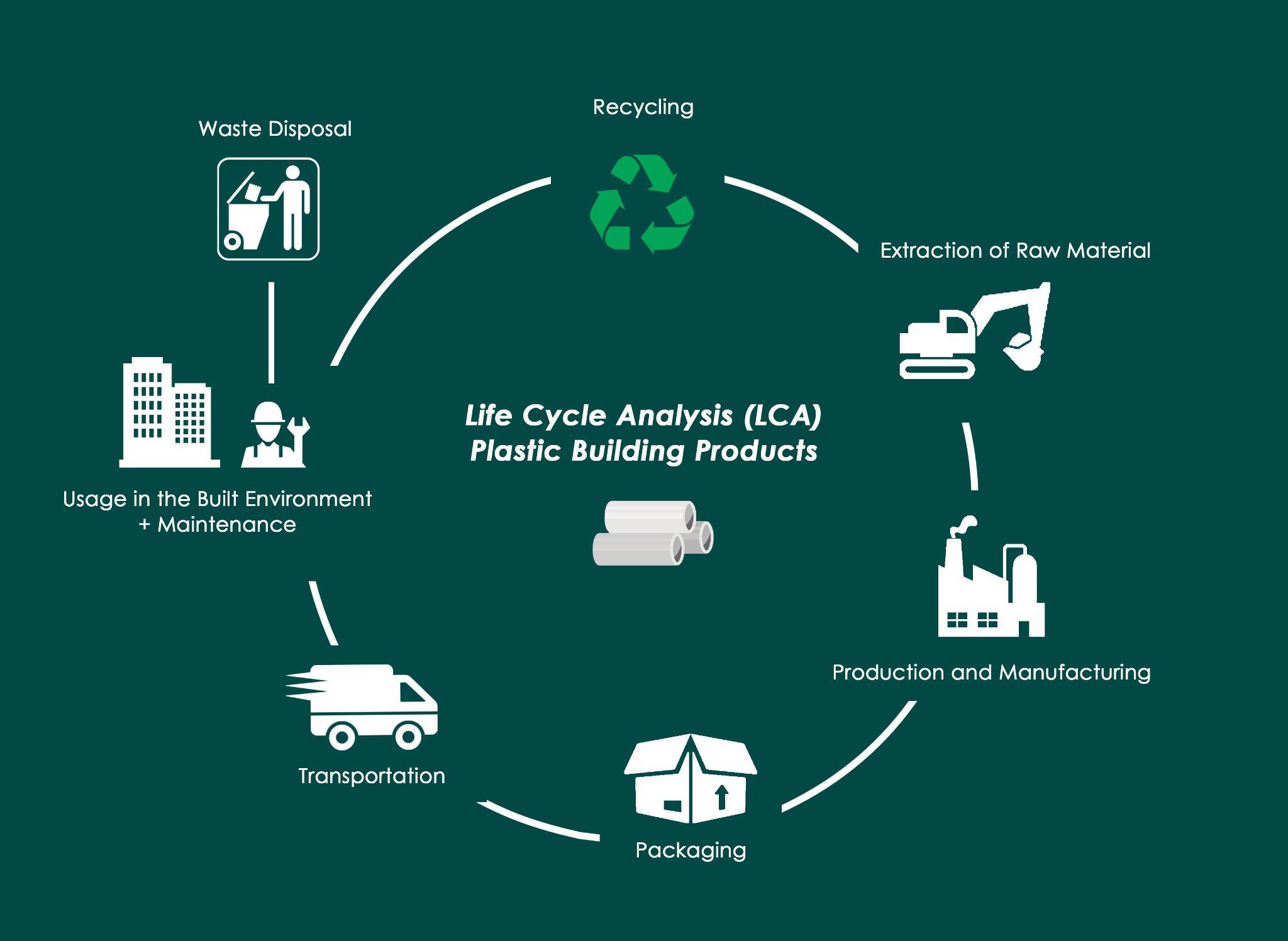
Life Cycle Analysis of Plastic Building Products | Image Source: Author
- Ensuring Recyclability Value of Plastics: It is important to make sure that any plastic product selected for a project is recyclable. Singleuse plastics and multilayered non-recyclable plastic must be avoided at all costs. While selecting a vendor, it is paramount that diligent research is conducted to ensure that the manufacturing line of the product has recycling systems embedded in its processes. For instance, some PVC companies claim to incorporate recycling processes in their systems. Verifications to confirm these declarations could be independently taken up by the client to then select vendors with recycling systems in place.
- Opting for Sustainable packaging: All building products arrive wrapped in packaging material. A lot of plastic can be reduced by making a wise choice with regard to packaging. As responsible clients, all packaging in the form of singleuse plastic (SUP) must be outright rejected. Firms must urge vendors to take responsibility and opt for biodegradable, sustainable packaging, only availing of their services after they have agreed to make a switch. Other important practices include- ordering in bulk which reduces the amount of packaging, and reusing certain types of packaging for other purposes. For example- gunny bags can be reused as covers for concrete slabs to prevent them from drying out during curing processes.
2. Waste Management and Mitigation Measures
Responsible waste management practices must become an uncompromised aspect of all construction sites. Where possible waste must be minimised and in cases where recycling is an option, it must be immediately opted for. Meticulous waste segregation is also crucial to be planned and managed right from the inception level since this will determine the efficient collection of different materials to further send them to recycling centres. Plastic waste must be segregated well to ensure 100% recycling of all plastic waste generated on construction as well as demolition sites.
3. Innovations in Recycled Plastic Building Material
It is important that the industry does not just minimise plastic waste but that it comes out of its bubble to contribute to easing the larger pollution crisis and helping restore the ecology. Buildings have strong potential to act as enablers in this regard since the built environment has an average shelf life of at least 65 to 70 years. This timeline comes as an opportunity to help channel plastic waste and put them to use for these many years. The means to do this would be to innovate and recycle plastic waste into both structural and non-structural building materials and ease out landfills in the bid.
Several firms are already contributing towards the larger cause of addressing the plastic pollution crisis through Research and Development in the area of material innovations. A Los Angeles Based Start-up, ByFusion Global Inc., has patented building blocks cast entirely out of recyclable and unrecyclable plastic. The block named ByBlock is a by-product of steam-fusing together plastics obtained from marine clean-up drives to help unclog oceans and restore aquatic ecosystems. Another residential development in Manheim Germany used a void-former system for slabs made out of recycled plastic, thereby saving 1,613 tons of concrete and cutting down CO2 emissions drastically.
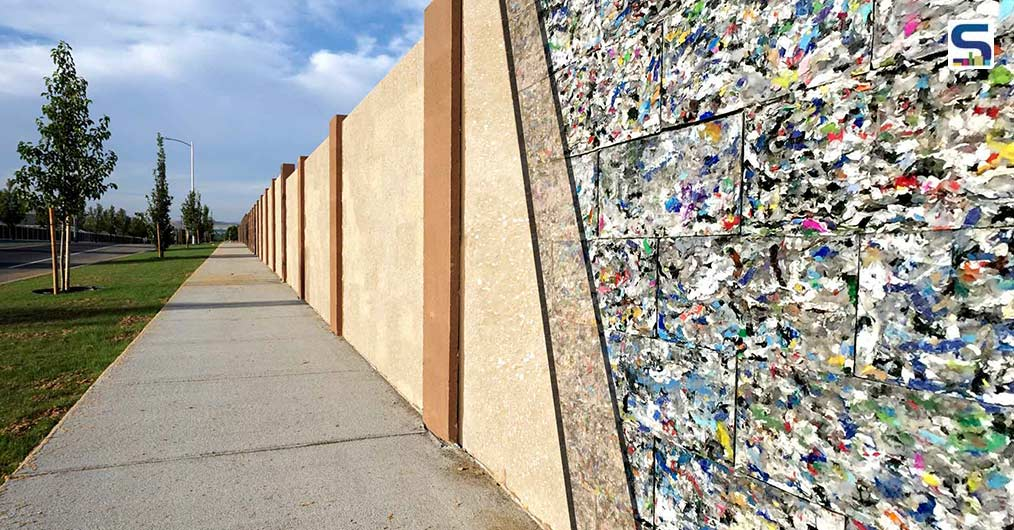
ByBlock- a pioneering building material made from recyclable and unrecyclable plastic
Image source: Surfaces reporter
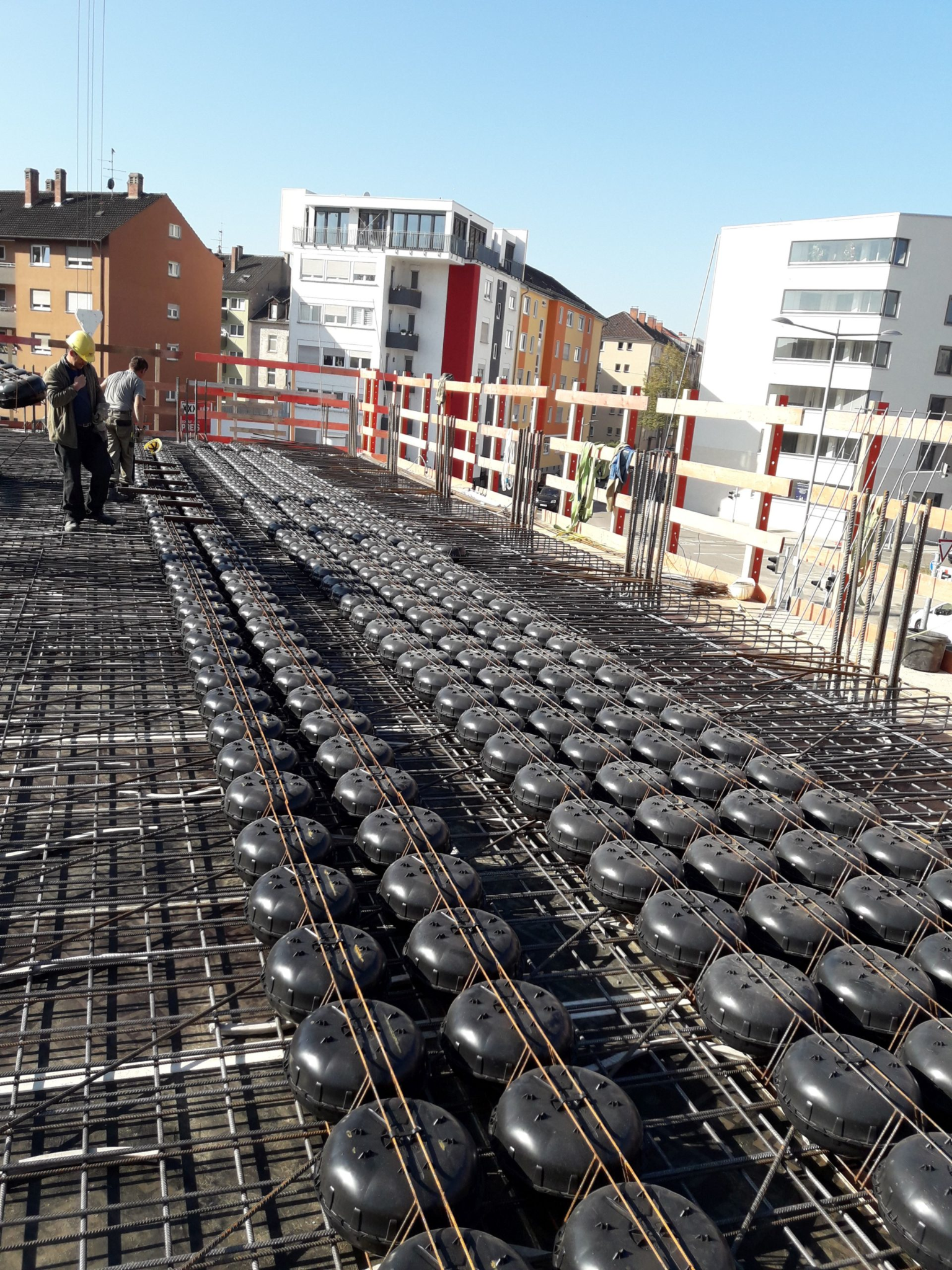
Void-former systems for slabs, Manheim, Germany
Image source: Global Construction Review
Recycled plastic building materials would benefit the environment in two major ways in the future- Reducing plastic waste from landfills and minimising high-emission materials like concrete and steel. The responsible way out is to not just follow these measures in a randomised manner but to plan out a well-managed system that involves circulation of the material in the economy. This brings us to the next point.
4. Circularity in Plastic Economy
The UN’s Sustainable Development Goal 12 highlights the importance of responsible production and consumption of resources. Along these lines, a concept if put to use for all resources on this planet, that will tremendously help arrest ecological damage is Circularity. What is produced is reused, recycled and kept circulating in the economy in a closed loop, without allowing it to enter the environment as waste. The concept of circularity speaks of zero waste and 100% recyclability. This ultimately will also lead to minimised manufacturing of virgin resources. The plastic industry too must move towards circularity. Only then can its impact on local and global ecologies reduce.
The Way Forward to #Unplastic our Environment
The need of the hour for the Architecture, Engineering and Construction industry is to wean off completely from the consumption of virgin plastic and become enablers in decongesting and recycling existing plastic waste. Accountability for every minute detail must be taken to avoid an impact of any kind on the environment. We have to wake up as individuals and collectively as an industry to realize that we do not operate on our sites in isolation, but create ripple effects of our every choice, affecting millions of life and life forms adversely. The United Nations reinforces the need for healthy Partnerships and Collaborations through SDG 17 to help make a difference on a larger scale. Instead of operating in fragments, we must unite as a fraternity wherein the Academia also feeds into the Industry with strong research-driven ideation that is then brought to fruition with collaborated efforts from various stakeholders including Architects, Civil Engineers, Planners, Urban Designers, Contractors, Craftspersons and so on. The Building Industry has the power to collectively spearhead the movement- #Unplastic our environment.
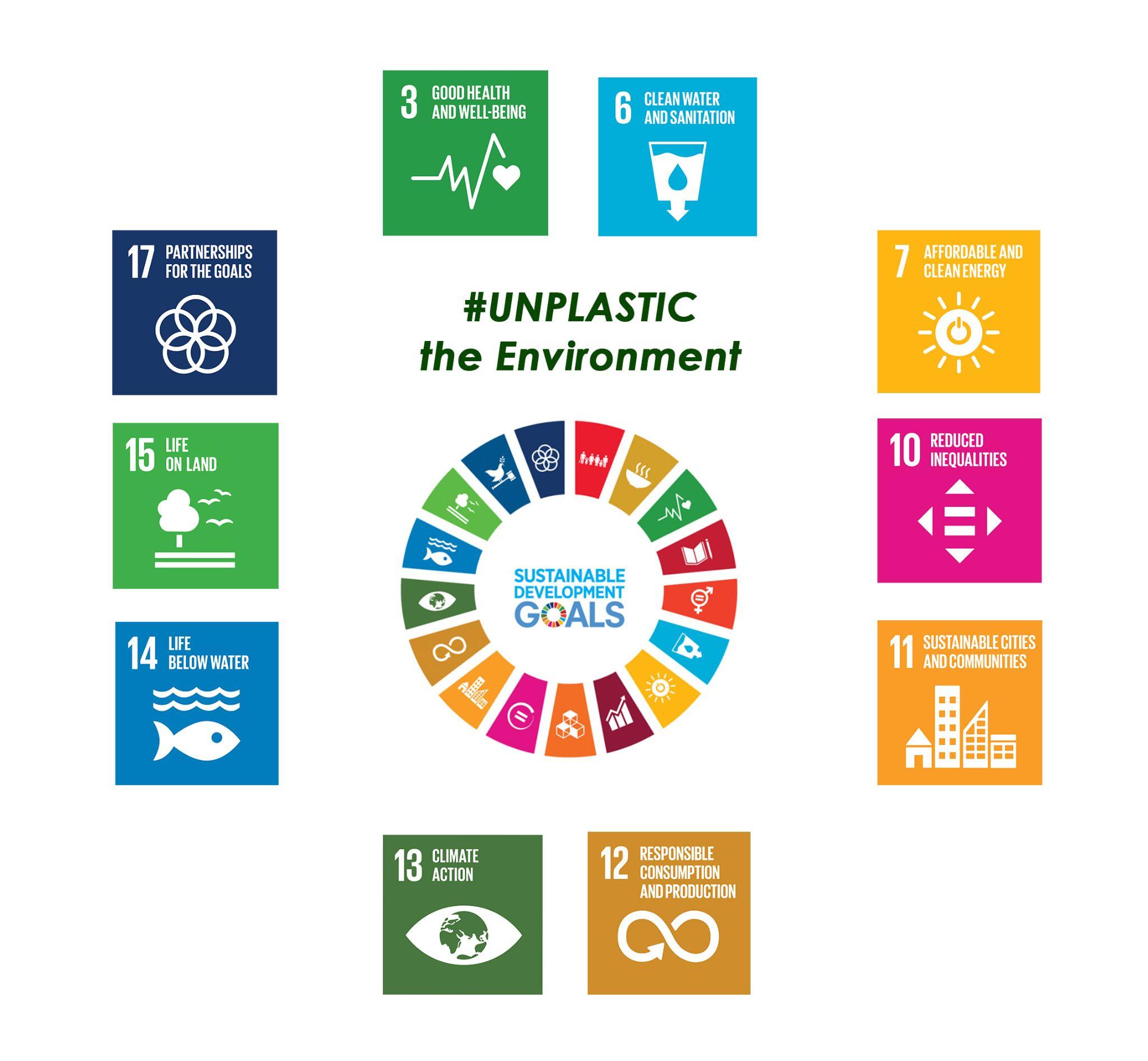
UN’s Sustainable Development Goals that go hand in hand with #Unplastic the Environment
Image source: Author; UN’s SDGs
References
Everything you need to know about plastic pollution. (2023, April 25). UNEP. Retrieved June 12, 2023, from https://www.unep.org/news-and-stories/story/everything-you-need-know-about-plastic-pollution
Campbell, H., Raushenbush, P. B., & Lieberman, E. (2022, August 16). Why the UN Is Taking on Plastic Pollution. Council on Foreign Relations. Retrieved June 12, 2023, from https://www.cfr.org/in-brief/why-un-taking-on-plastic-pollution
ndian Building Products Industry: Using Plastic Responsibly – Sourcing Hardware. (2022, June 21). Sourcing Hardware. Retrieved June 12, 2023, from https://sourcinghardware.net/indian-building-products-industry-using-plastic-responsibly/
Kendle, M. (2021, June 25). The construction industry's place in the new circular plastics economy | Greenbiz. GreenBiz. Retrieved June 12, 2023, from https://www.greenbiz.com/article/construction-industrys-place-new-circular-plastics-economy
Life Cycle Approach to Plastic Pollution. (n.d.). Life Cycle Initiative. Retrieved June 12, 2023, from https://www.lifecycleinitiative.org/activities/life-cycle-assessment-in-high-impact-sectors/life-cycle-approach-to-plastic-pollution/
Reducing waste in the construction industry. (2022, December 15). Clean India Journal. Retrieved June 12, 2023, from https://www.cleanindiajournal.com/reducing-waste-in-the-construction-industry/
World's First Multipurpose Concrete Block Made from Recycled and Unrecyclable Plastic | ByFusion Global. (n.d.). Surfaces Reporter. Retrieved June 12, 2023, from https://surfacesreporter.com/articles/133761/worlds-first-multipurpose-concrete-block-made-from-recycled-and-unrecyclable-plastic-byfusion-global
Air instead of concrete: Plastic bubbles take 1600 tonnes out of tower. (2019, October 23). Global Construction Review. Retrieved June 12, 2023, from https://www.globalconstructionreview.com/air-instead-concrete-plastic-bubbles-take-1600-ton/
About the Author: Rama Raghavan is an Architectural Writer based in Pune, India. After working for several years in the Industry and Academia, she found her passion in Writing. She is also a trained musician and a self-taught artist who enjoys feeding her interests into projects through creative, out-of-the-box storyboarding. Rama strongly believes that multidisciplinary perspectives enrich design thinking and trigger critical discourses. She now works full-time as an Architectural Writer and several of her articles have been published on renowned platforms.
Rama can be reached via Email, LinkedIn, or her Website for writing collaborations and commissions. Contact details are below:
Email: archwriter.ramaraghavan@gmail.com
LinkedIn: LinkedIn
Website: ramaraghavan.in








